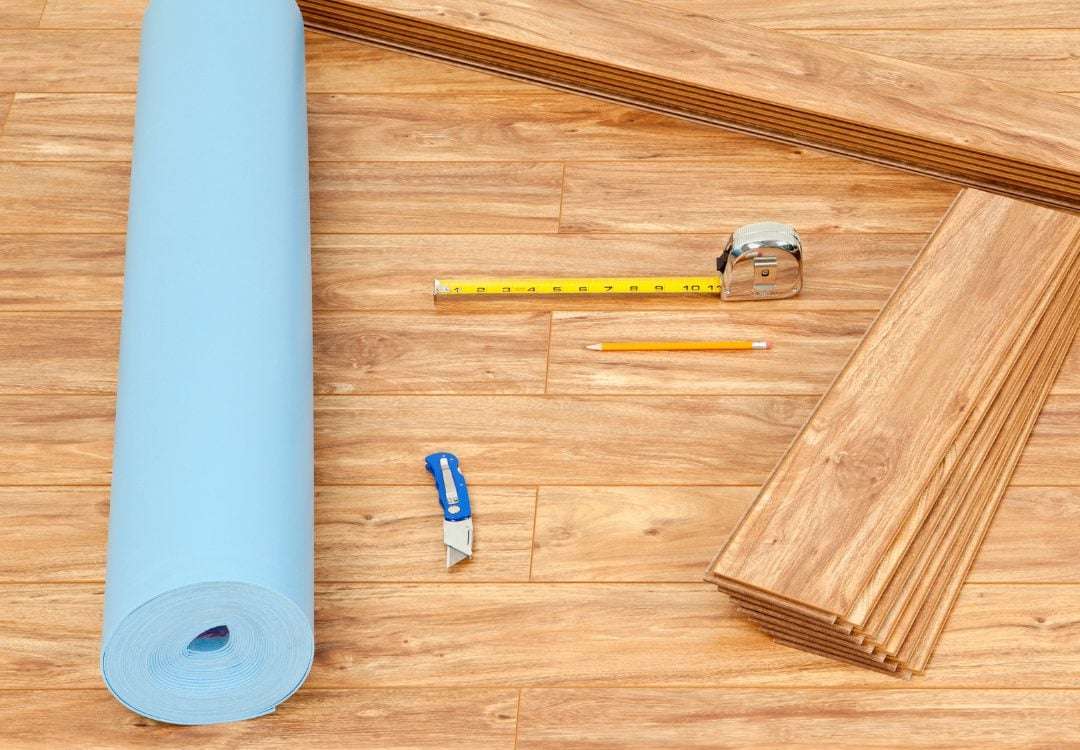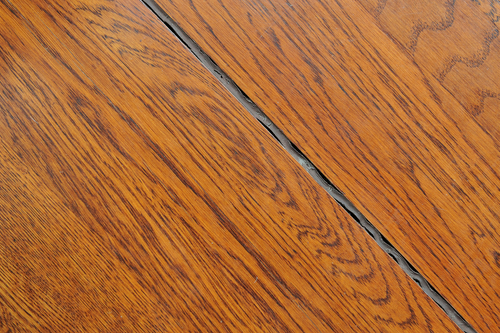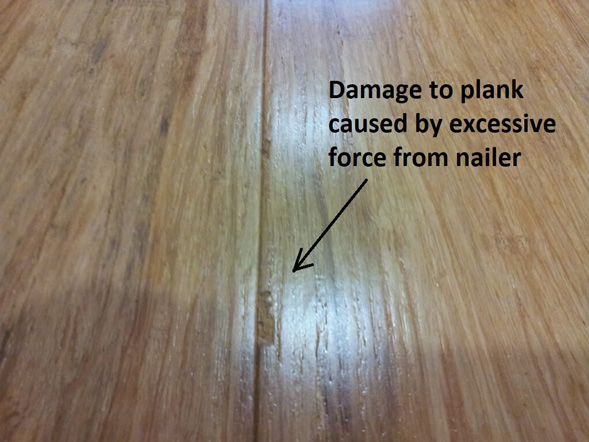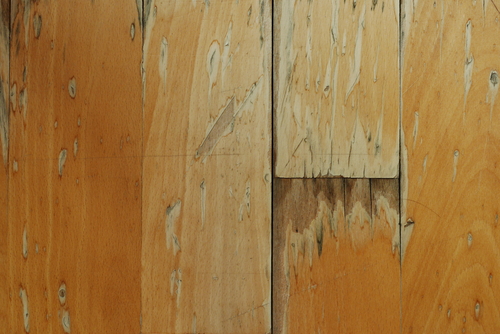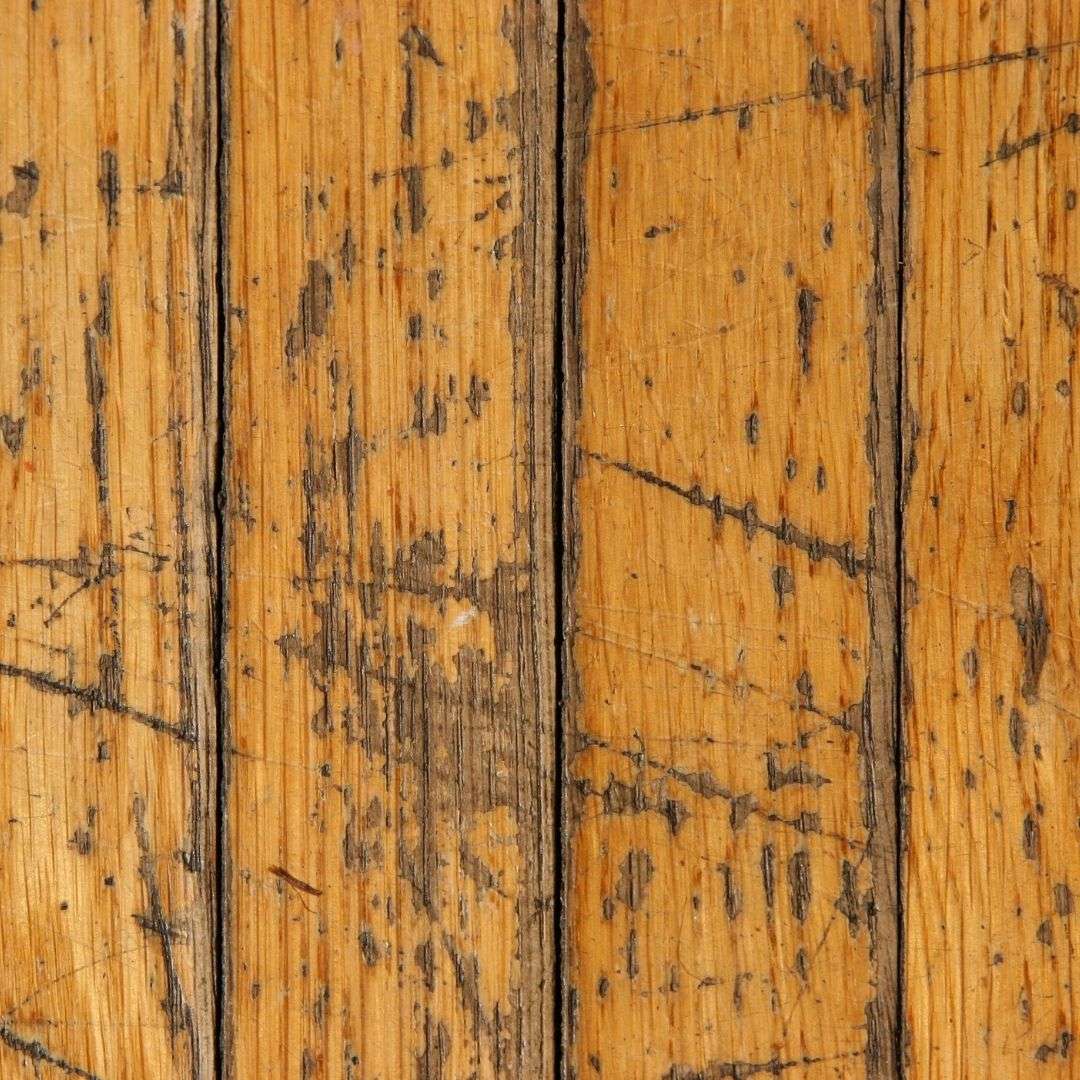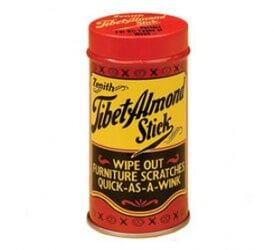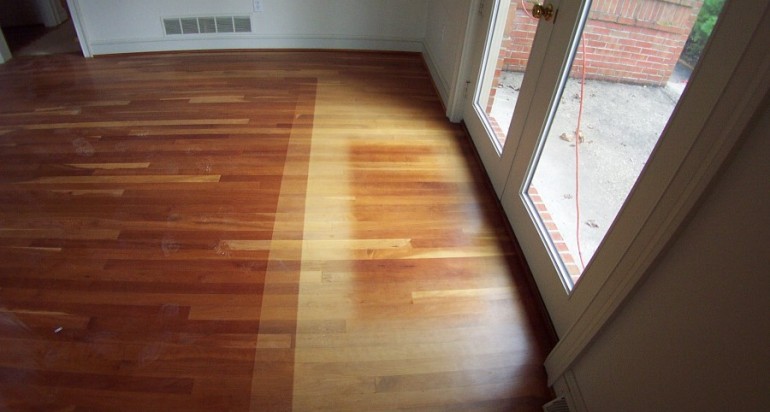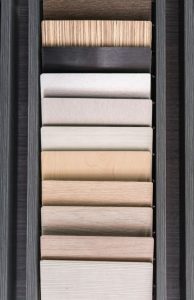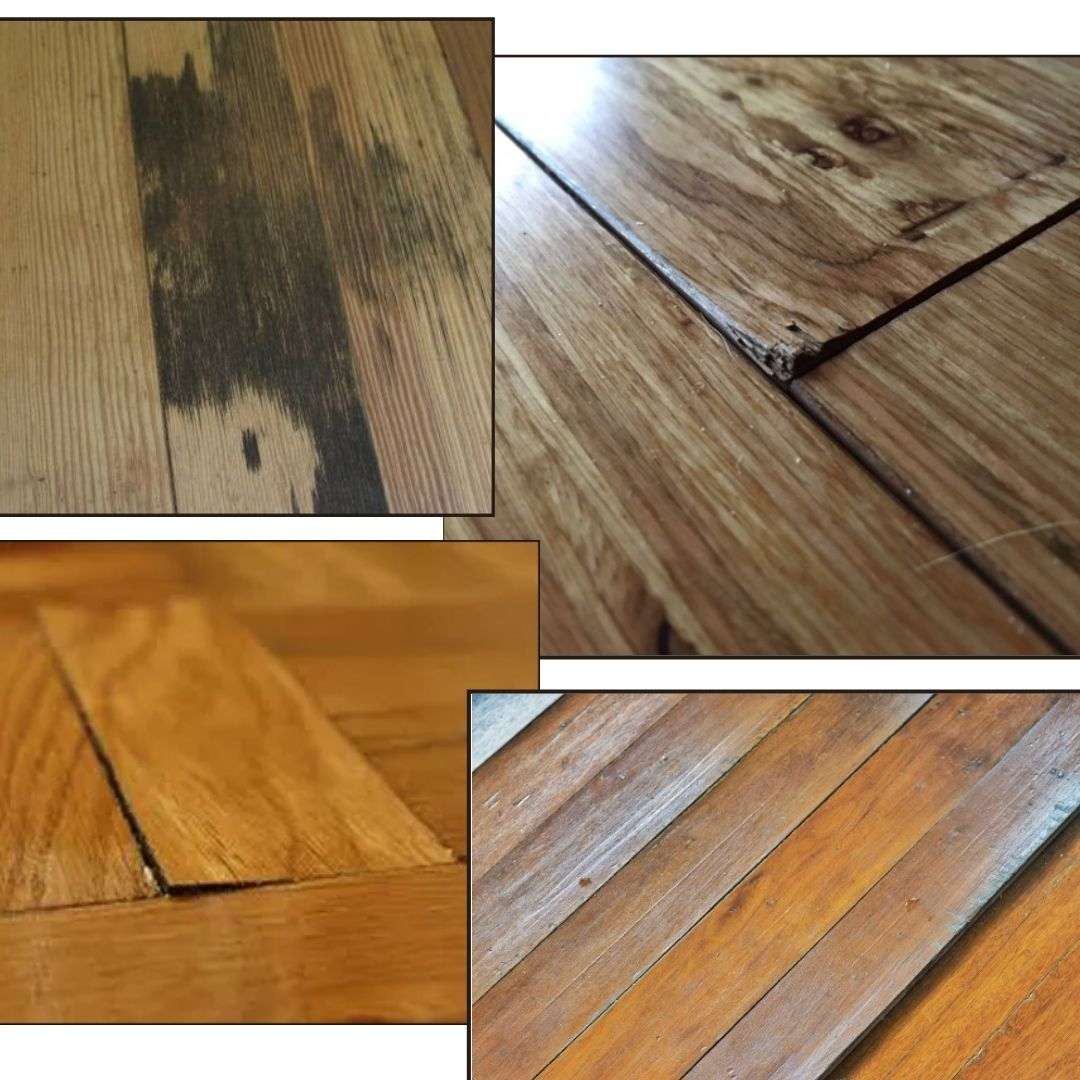 Refinishing is a critical part of hardwood floor upkeep. While hardwood floors are often seen as a cost-effective flooring, repetitive refinishing can feel burdensome and easy to procrastinate. The intensity of the refinishing process depends on the severity of damage, but it can often be completed efficiently without relying on professional help – making it cheaper than replacing the floor or heavily sanding down to rid of deep gouges.
Refinishing is a critical part of hardwood floor upkeep. While hardwood floors are often seen as a cost-effective flooring, repetitive refinishing can feel burdensome and easy to procrastinate. The intensity of the refinishing process depends on the severity of damage, but it can often be completed efficiently without relying on professional help – making it cheaper than replacing the floor or heavily sanding down to rid of deep gouges.
If scratches, dings, dents, fading, or other damage are keeping you from truly loving your hardwood floors, don’t worry! There’s a way to get that new floor feeling back. In some cases, it makes more sense to simply replace them. For those eager to put in the elbow grease, however, repaired and refinished hardwood floors are within reach.
But how do you determine whether your floor’s condition requires a call to the repairman versus a call to the new flooring store? Let’s find out.
From a simple scratch to severe water damage, your flooring can be susceptible to all sorts of issues. This is especially true if your floors are low in quality or old in age. The type and severity of damage your floors have endured must be assessed when trying to determine whether to repair or replace the flooring. It can also help you to prevent further damage and keep replacement floors from experiencing the same issues. In finding the primary cause, we can observe three common culprits:
- Improper Installation
- Water Damage or Flood
- Excessive Wear & Tear
Repair or Replace: Improperly-Installed Floors
Most damage that occurs within the first year of installation can be traced back to how the floors were installed. That’s why it’s so important to keep these things in mind before, during, and after hardwood flooring installation:
- Always acclimate the floors.
- Follow all manufacturer-provided instructions for installation.
- Use the proper tools required for the job.
- Hire a professional and experienced installer if you’re not comfortable installing yourself.
- Be aware of the potential installation mistakes that can be made – and avoid them!
Flooring that is Cupping
Cupping is when your flooring planks dip down in the middle while the edges rise up. Flooring that absorbs excessive moisture on the underside will cause expansion and cupping with the edges raised. If your floors are cupping, the subfloor may not have been sealed properly during installation or an adequate vapor barrier may not have been used. When cupping is limited to a small area, a repair may solve the problem. Affected planks can be removed, a proper vapor barrier can be put in place, and new planks can be installed. When the issue affects a larger area, complete flooring replacement may be necessary.

Crowning is the opposite – the sides slope down and the middle rises up. Flooring loses some excess moisture, shrinks on the underside and flattens, leaving the edges of strips lower than the centers. This can occur when moisture levels return to normal after a cupped floor has been sanded flat. As with a cupping floor, excessive moisture needs to be addressed if a permanent solution is desired.

Flooring that has Gaps Between Planks
Gaps appear as spaces between the planks. This can be seen along the lengths and/or the widths of the flooring planks. Bamboo and other hardwoods need time to acclimate to their new environment (inside your home) before installation.
This helps the wood expand and contract less drastically as the seasons, and thus the indoor humidity, change. Some gapping can be normal, but excessive gaps – especially those that are visible consistently throughout the year – may require a repair or flooring replacement.
Note about Flooring with Moisture Issues: When excessive moisture is causing problems with your bamboo or hardwood floors, be sure to address and correct this issue before beginning flooring repairs. Once you have moisture under control, keep it that way. No matter the outside temperature, the temperature inside should stay in the 60 to 80-degree range, and indoor humidity should be 35% to 55% year-round.
Flooring with Chips or Cracks from Nailing
This problem doesn’t occur with floating installations. Too much force cracks the sides of the planks if the nail gun pressure isn’t set properly during nail-down installation. Not using the appropriate nailer, cleats, and/or pressure can cause chips and cracks in the floor’s surface. This often appears during installation, so the installer will have time to notice and correct the mistake.
As for when to repair or replace – well, it depends on when the damage on a wood floor is noticed. If you’re not too far into your installation process, then it could be worth it to replace the board with a spare: most installations recommend having additional product on hand for reasons just like this!
The board in question, however, might already be surrounded by other planks. Or maybe it’s been a long day of installing, and you just don’t give a darn in the heat of the moment. All is not lost! Depending on the depth of the damage, a DIY refinishing project could be enough to touch up your hardwood floor. This excellent guide provides a comprehensive, step-by-step process for buffing out minor damages and shallow scratches.
If the damage is too deep but you don’t have the time or money to replace the floors, perhaps it is best to reconfigure the feng shui: throw a rug over that bad boy and forget about it.
Repair or Replace: Water-Damaged Floors
Many of the issues found in hardwood floors have to do with water or moisture. However, in this section, we mean water from a leak, a flood, or a spill. Knowing the source of the water also determines the actions you take.
Clean water is potable or drinkable water. This can be from a bathtub overflow or a leak from a supply line.
Greywater is water contaminated by soap or other chemicals. This water leaks or floods from a sink or tub drain or the drain from a washing machine.
Blackwater contains sewage. This can be from a backed-up toilet or a sewer line. This water contains harmful bacteria. If your floors were damaged by blackwater and the water was allowed to sit, you can stop reading now. Those floors (and likely even the subfloor) will need to be replaced. When it comes to this kind of water damage, you don’t want to risk putting your health in danger. Getting the floors and anything else contaminated with blackwater removed from your home is vital.
No matter the source, the amount of water the floors are exposed to and the duration for which they were exposed are important to determining whether or not the flooring can be repaired or replaced.
Spilled a cup of water and didn’t clean it up until a few hours later? Your floors are likely just fine. Ambient bamboo floors especially are heralded for their 24-hour spill protection warranty. Every floor can’t match that level of resistance, for most wood is susceptible to water damage. Even with such spill-protection, it is important to clean up standing water as soon as you become aware of it. Ease and efficiency aside, it is always better to protect the finish than to have to refinish your hardwood floors.
Washing machine malfunction that soaked your floors while you were at work? A dehumidifier might help bring the floors back to normal but they may also need replaced if there’s lasting stains or damage.
Experience a major flood in your area that allowed a lot of water inside? Flooring replacement is your best bet.
For more info on how to prevent extensive water damage, read here!
Repair or Replace: Floors with Excessive Wear & Tear
This damage indicates wood flooring that’s led a tough life. Wood floors are susceptible to a range of damage. Years of foot traffic, heavy furniture, sunlight, pets, and just about everything else that touches your flooring has the potential to damage it. The question often becomes: is my finish wearing down, or is the damage seeping into the integrity of my floor?
Certain scratches look worse than they actually are. A simple buffing and sanding technique can be employed – even without professional help – to refinish hardwood floors without a total overhaul. When gouges and dents have penetrated the actual wood itself, the evaluation is not so simple.
Scratched or Dented Flooring
One of the most common damages to hardwood? Surface blemishes. These can come in the form of scratches, nicks, and gouges. What’s the difference between the three? Size really does matter. Scratches mar the surface of wood flooring, nicks penetrate slightly deeper, and gouges go into the core of the plank.
None of it is pretty – unless your floors are in a punk club or another venue that celebrates such a worn look. Wait – I doubt you’d be reading this if that was the case. I digress…
When it comes to bamboo floors, most small nicks and scratches buff themselves out with daily wear. With most hardwood flooring, minor nicks and scratches can be made less noticeable with a product like The Amazing Tibet Almond Stick. Gouges can sometimes be covered with wood putty, but you’ll want to find the right color that matches your flooring – otherwise it can stick out like a sore thumb. A fresh coat of finish can be applied in some circumstances to help the putty blend with the rest of the floor. Always consult with the maintenance guide provided by your floor’s manufacturer before applying new products or taking your a hardwood refinishing job into your own hands.
If you want to sand out a scratch, you’ve got to sand down to the surface where the scratch begins. Begin with a very fine grit (80 grit) and work up to a super fine grit (120). Always wipe with a tack cloth between sanding. The real trick to repairing a nick or scratch is matching the finish. Take one of your leftover planks with you when selecting the finish. It’s better to hang onto those extra planks in case you ever need to repair deep gouges, stains, or water damage.
When surface blemishes are prevalent and not limited to one area, you should consider replacing or refinishing your hardwood floor.
Floors that have Faded
Another factor that can lower the aesthetic appeal of your flooring over time: excessive sun exposure. Ever go to rearrange a room and find that the floor outside of your rug is now a different color than the flooring under the rug? Direct sunlight can slightly fade or darken your floors over time due to the UV radiation in the sun’s rays.
Prevention is key when it comes to fading: buy floors with durable protective finish, move furniture around periodically, and equip sun-facing windows with shades or curtains. When it becomes too unsightly, you can always treat yourself (and your home) to some fresh and beautiful new bamboo flooring!
It’s important to get out in front of UV protection for numerous reasons; however, the cut and dry is that it is incredibly difficult to achieve uniform color once you’ve lost it. Sanding and refinishing hardwood floors can cause irregular discoloration if done improperly or unevenly. Thus, fixing sun spots isn’t as easy as buffing out scratches. Ensuring that the entire floor has even sun exposure (as much as possible) can work wonders in preventing this problem from ever occurring.
Floors Damaged by Pets
Our furry family members might be adorable, but that doesn’t mean they can’t do any harm – whether it be intentional or accidental. From nail scratches to urine stains, wood floors are susceptible to a range of damage caused by pets. Most pet nails won’t harm hardwood floors unless the scratching is heavy, deliberate, and/or excessive. Whether it happens while your pet is innocently playing with a toy or it’s a bad habit your pet has picked up while you’re at work, scratching can compromise your floors.
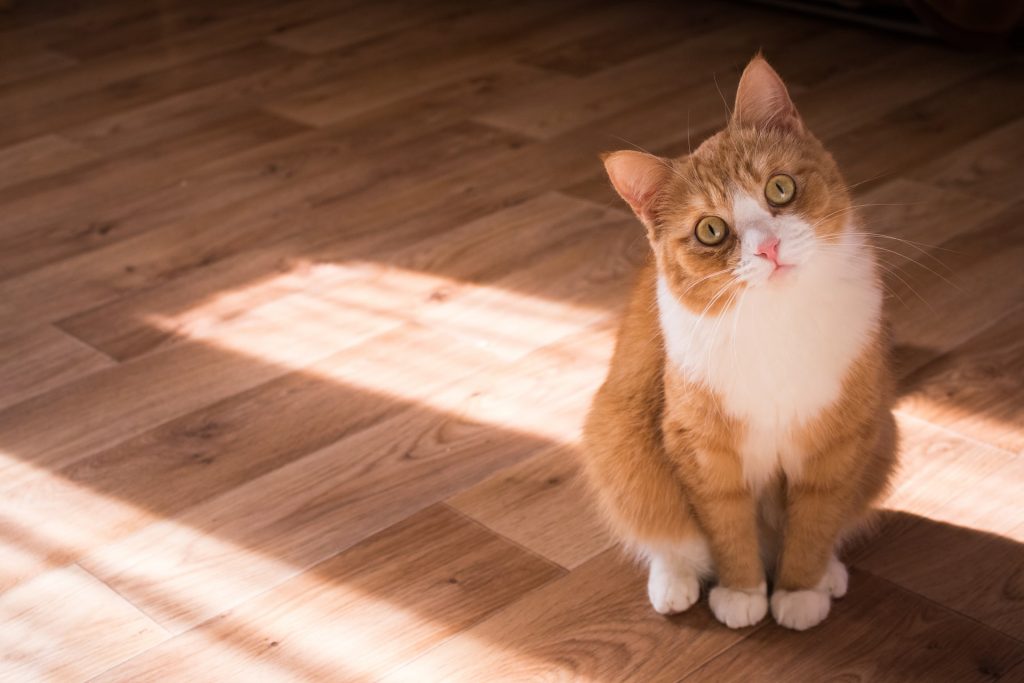
Urine stains are different from water stains because you must deal with the odor as well. Pulling up hardwood flooring planks from the affected area, cleaning the subfloor below or using an enzymatic odor eliminator to treat the subfloor, and using new planks in place of the old can either be a quick or stressful fix. This depends on the type of flooring you have and the installation method that was used. Click-lock floors installed via the floating method, for example, typically make for easy repairs.
As with other types of spills, it is imperative to clean up urine as soon as you become aware of it rather than ever allowing it to stain the floor. Many installations do not make it so easy to swap out boards when damaged – heck, this article could have been one paragraph if it were that simple across the board (no pun intended).
Pet urine can be caustic or problematic if not dealt with or deodorized: we’ve all seen an animal or two with some favorite tinkle spots, and masking the smell can be as important as cleaning the initial mess to prevent repeat visits to the same spot. Our urinary experts have tackled this sticky problem in a more comprehensive manner, for more information you can check how to clean up pet urine from bamboo flooring. After all, you can lead a dog to the yard, but you can’t make it pee – or whatever they say.
When Floor Replacement is Necessary
Generally, repair should be your first option. Even if the damage covers a large area and doesn’t involve cupping, buckling, or gaps then refinishing the hardwood flooring might be the best form of repair. Always check with your flooring manufacturer before refinishing your floors. Some floors can only be refinished a limited number of times, and others may not be able to be refinished at all.
If your floors aren’t made of strand woven bamboo or hardwood, most damage done to them will require a replacement. Flooring like laminate often cannot be repaired at all. You can try hiding scratches with a stain pen, but once laminate has been gouged or scratched, it’s hard to hide.
If the floors are hardwood and have been damaged by sewage (the blackwater discussed previously), you’re going to need to replace the flooring in this scenario as well. Finally, you should consider replacing your floor if you want the look of wider planks (very popular now!), or if the cost of a new floor is comparable to the refinishing cost.
Goodbye, Damaged Floors. Hello, Bamboo!
Now that you’ve lived through the trauma of damaged hardwood floors, you’ll want to apply what you’ve learned when looking for replacement floors.
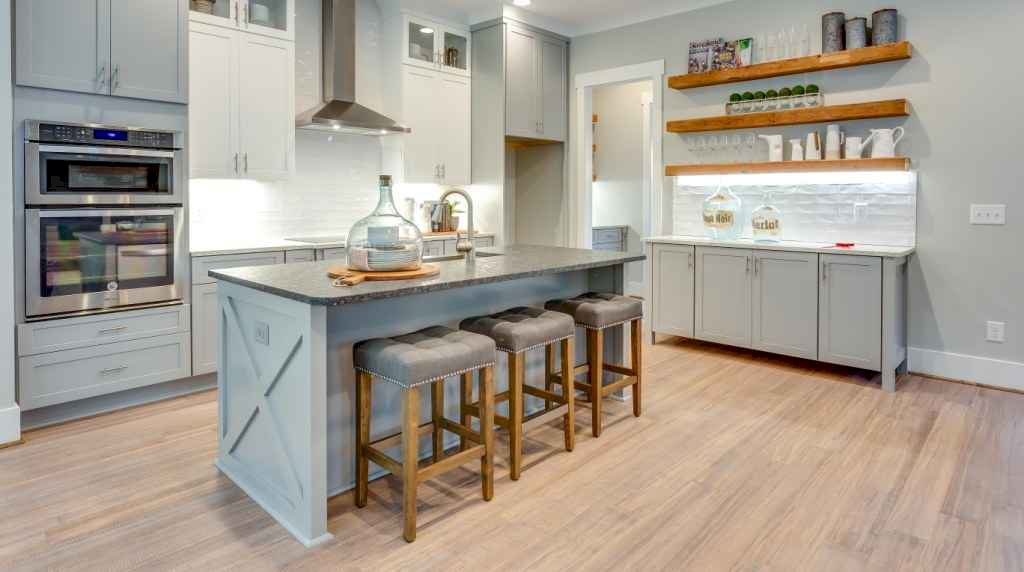
For example, if your floors are heavily scratched or gouged, then you might want to replace them with something more durable. Strand woven bamboo, for example, is one of the hardest and toughest residential flooring options available – and it’s beautiful, too! Click-lock engineered bamboo floors can be repaired much more easily than nail-down tongue and groove floors. You can also refinish engineered bamboo up to two times if necessary. Engineered bamboo is also affordable. Buying new floors made from this eco-friendly material can even end up costing you less than refinishing badly damaged hardwood flooring.
Find the color and style that fits you best and enjoy that new floor feeling that actually lasts.
Last Updated: 8/10/2022

About the Author
Cheryl is our go-to guru for all things sustainable living. She’s on a mission to make your family and our planet thrive! With a heart as big as her passion for sustainability, Cheryl brings you the freshest insights on eco-friendly building products and energy efficiency. 🌱💡
And hey, did you hear about the eco-friendly lightbulb that went to therapy? It finally found its inner “enlightenment”! 😄 Join Cheryl on this green journey, where she’ll tackle your concerns with a smile and a sprinkle of eco-humor!

